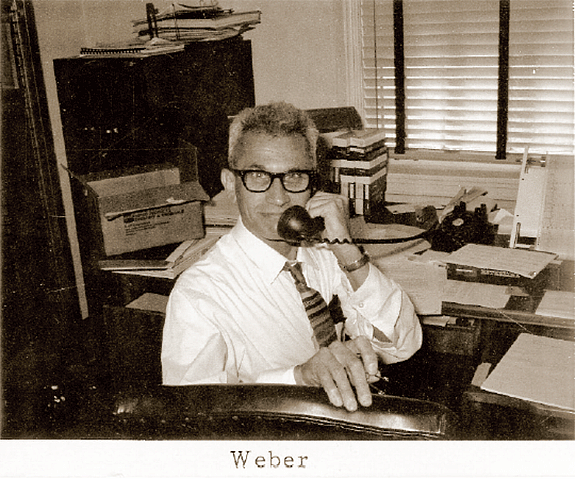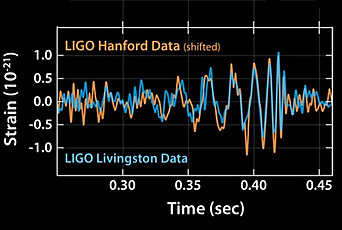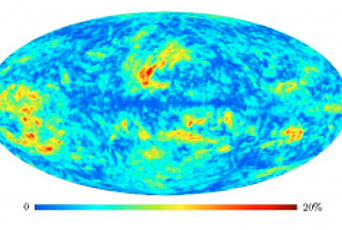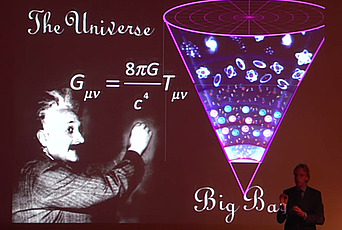Unfashionable Pursuits, Leaps in the Dark, and Detecting Gravitational Waves

The Institute sometimes spends money on risky ventures, giving sustained support to people who work on unfashionable and dubious projects. One example of a risky venture was Einstein, who worked here for twenty years on unified field theories that never fulfilled his hopes. Another example was Joseph Weber, who worked on the design of gravitational-wave detectors that failed even more disastrously to fulfill his hopes.
Now we are celebrating the discovery of a real gravitational wave signal emitted from a collision of two massive black holes. The discovery paradoxically proves both Einstein and Weber to have been both right and wrong. Einstein was right when he predicted the existence of gravitational waves, wrong when he published a paper claiming to prove that black holes could not exist. Weber was right when he invented and constructed the first detectors of gravitational waves, wrong when he claimed that his detectors had detected real gravitational signals.
That is the way science works. Great scientists start new fields of science by making leaps in the dark. Nature decides which of the leaps is right and which is wrong. Very often, as in this case, the scientists who made the leaps are dead before Nature pronounces her verdict. The Institute can be proud that we supported both these great scientists with their risky ventures, more than half a century before Nature proved them right and wrong.
Joseph Weber came here three times as a visiting Member, in 1955, 1962, and 1969, each time on sabbatical leave from his job at the University of Maryland. He did not fit into the standard pattern of Institute postdocs. He was not interested in the fashionable topics that most of the young people were pursuing, particle physics and statistical mechanics and quantum field theory. He never considered himself in any way equal to Einstein, but he was in some striking ways similar to Einstein. Both came into academic life late, after spending several years in a job concerned with practical engineering. Einstein acquired his engineering background in the Swiss Patent Office, Weber in the United States Navy. Both of them made important contributions to quantum mechanics, Einstein with the theory of the photoelectric effect, Weber with the theory of the coherent emission of light by lasers. Both of them chose gravitation as the main problem that they spent the greater part of their lives exploring. Both of them continued to explore gravitation through long decades when the subject was unfashionable. Both of them were stubborn as mules when their beliefs were challenged. Einstein never accepted the possibility of black holes, and Weber never accepted the possibility that his detectors were detecting internally generated noise.
I remember with pride and joy the years when Joe Weber was here at the Institute. We argued endlessly about the possible meaning of the signals that he was monitoring every day with his detectors. If they were real gravitational waves emitted by extraterrestrial sources, it should have been possible to calculate the behavior of the sources theoretically. If they were environmental or internally generated vibrations, then it should have been possible to simulate them experimentally. We tried both ways, and neither way succeeded. But Joseph Weber, like Einstein, never gave up hope.
The history of gravitational waves is a fine example of the general rule, that big scientific advances require a combination of new ideas with new tools. Einstein and Weber provided the ideas, the theory of general relativity and the design of a mechanical detector of gravitational waves. The testing of the ideas failed because two essential tools were missing. The missing tools were a detector of adequate size and sensitivity to separate real exterrestrial signals from noise, and a computer algorithm of adequate power and stability to calculate numerically the precise wave-forms of naturally occurring signals.

It took half a century for the international community of gravitational experts to create the missing tools. The experimenters created the Laser Interferometer Gravitational-Wave Observatory, detecting gravitational waves by observing tiny displacements of mirrors suspended in long narrow vacuum chambers. The computer experts created algorithms to explore numerically the solutions of Einstein’s equations describing exactly the delicate process of coalescence of two massive black holes into one.
These two tools, the LIGO hardware and the black-hole software, were both essential for identifying and understanding the signal that was received on September 14, 2015. Equally essential were the two ideas conceived by Einstein and Weber, the idea of a gravitational wave as a traveling distortion of spacetime, and the idea of a mechanical device converting the spacetime distortion into a detectable signal. We hope that the Institute will continue in the future to give support to people pursuing dubious ventures in unfashionable fields. The example of Joseph Weber shows that even a failed venture can point the way to ultimate success.
Recommended Reading: Videos of the IAS lectures and discussion on the new era of gravitational-wave astronomy: www.ias.edu/ideas/2016/gravitational-waves
“Gravitational Waves Detected, Confirming Einstein’s Theory” by Dennis Overbye, New York Times, February 11, 2016: http://nyti.ms/20qIaCA
“Joseph Weber Dies at 81: A Pioneer in Laser Theory” by James Glanz, New York Times, October 9, 2000: http://nyti.ms/1QZsjZp
For more information about the LIGO detection, visit www.ligo.org.


